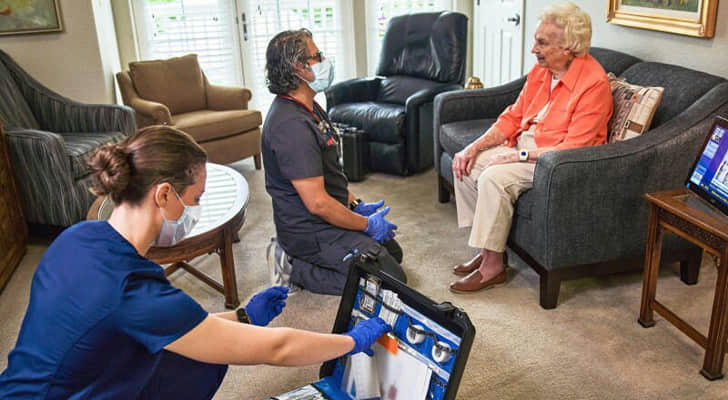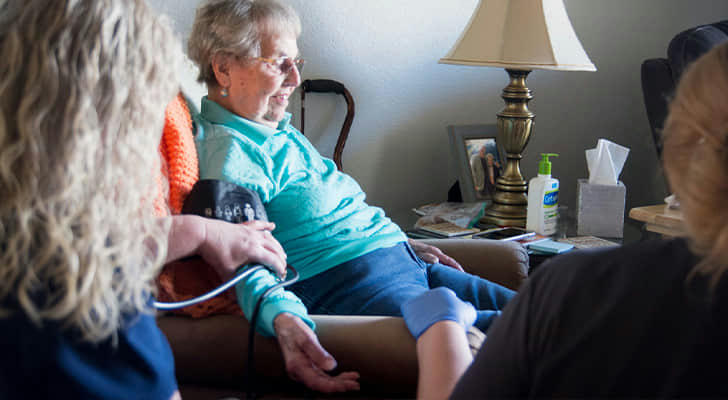Is the Hospital-at-Home Model Ready for Prime Time?
Jordan Stohler, a 42-year-old nurse from Knoxville, TN, found herself back at Fort Sanders Medical Center in June 2023, battling sepsis after her double mastectomy.
After five days of treatment in the hospital, Jordan had a choice: she could continue her IV antibiotics in the hospital or opt for the Advanced Care at Home program offered by Covenant Health, which is part of the same medical system.
She chose the comfort of home, where she could be close to her cherished dog and enjoy her own space. In the end, she felt her decision was spot-on.
“I got excellent care at the hospital, but being at home, with my dog around, cooking my own meals, and getting the same personalized care was fantastic,” Jordan said.
She found that healing at home was far more relaxing. “I probably would have gone a bit stir-crazy if I had stayed in the hospital. The home care was superb.”
This home-based care trend, boosted by Medicare's support during the COVID-19 pandemic, is gaining momentum. Today, 322 hospitals in 37 states offer such programs, although not all are up and running.
A recent survey in The Journal of the American Medical Association revealed that nearly half of respondents are open to hospital-at-home care, while more than a third were indifferent. Only 17% preferred a traditional hospital setting.
Bruce Leff, MD, a Johns Hopkins professor who has studied hospital-at-home models since the 1990s, noted that personal comfort with either setting often determines preference. Some people prefer home care, while others are hesitant, regardless of their background or health conditions.

How It Works
Hospital-at-home programs vary, but they generally allow patients needing specific types of care to receive treatment at home instead of in a hospital. Conditions like heart failure, COPD, pneumonia, cellulitis, and COVID-19 often qualify, according to Dr. John Busigin, who oversees Covenant's program.
When Jordan was enrolled in the program, she got everything she needed at home, including medical equipment and medications. She used her own bed but had an IV stand set up next to her. A tablet helped her stay in touch with her care team, and she had a special watch for emergencies and a direct phone line to her medical team.
Experienced paramedics visited her home twice daily or as needed to check her IV, change the IV bag, and monitor her vital signs. A physician assistant came by twice during her week-long home care, and she had daily virtual check-ins with a hospitalist.
Because registered nurses are scarce, Covenant's program employs skilled community paramedics with advanced training. These paramedics handle the tasks typically performed by RNs.
Jordan faced another challenge when excess fluid from her IVs made her short of breath. Instead of heading to the ER, she called for help. A paramedic quickly arrived with an IV diuretic to help her expel the fluid.
While 5-10% of patients in similar programs nationwide end up needing hospital readmission, those in Covenant's program had a 25% lower readmission rate compared to traditional hospital care.
Studies show these programs not only cut readmissions but also cost less and improve the patient experience. According to the JAMA survey, most people are enthusiastic about hospital-at-home care, with 56% believing recovery is faster at home and 59% feeling safe receiving care at home.
Survey participants had mixed feelings about assisting with care tasks. Most felt comfortable managing medications, but fewer were willing to handle more complex tasks like changing feeding tubes or IV bags. However, hospital-at-home programs don't involve caregivers in clinical tasks due to Medicare and state regulations. Family members may be trained for specific tasks like wound care but aren't required to provide medical care.

Changes in the Future
The number of Medicare hospital-at-home waivers has almost doubled since 2021. Before Medicare began reimbursing these programs during the COVID crisis, there were only about 15-20 in the U.S.
The lack of payment options was a major barrier before the pandemic. Now, Medicare, several state Medicaid programs, and some private insurers cover these services. Jordan's private insurance covered her home care, and many insurance plans partnering with Covenant offer similar coverage.
Dr. Leff is hopeful that Congress will extend the Medicare waiver program beyond its December deadline. Preliminary signs are promising, and a Congressional Budget Office report showed the program does not increase Medicare's costs.
Pippa Shulman, MD, from Medically Home, emphasizes the importance of timely and effective care at home. Her company provides the technology and infrastructure needed for these programs, ensuring patients get the care they need.
Hospital-at-home could also be a game-changer for rural areas, where many hospitals have closed. Dr. Leff and Rami Karjian, CEO of Medically Home, agree that this model could offer vital care where traditional facilities are no longer available. Medically Home already supports rural programs using cellphones and experienced paramedics to bridge gaps in resources.
“Hospital-at-home should be accessible beyond urban centers,” Karjian said. “It's part of solving broader healthcare access issues.”

So, there you have it – another reason to roll up your sleeve and get vaccinated. Whether it's for avoiding shingles, protecting against dementia, or just staying healthy overall, vaccines like Shingrix are showing us that a little prevention can go a long way. And hey, if it means a few extra months without worrying about dementia, it's definitely worth considering, right?
